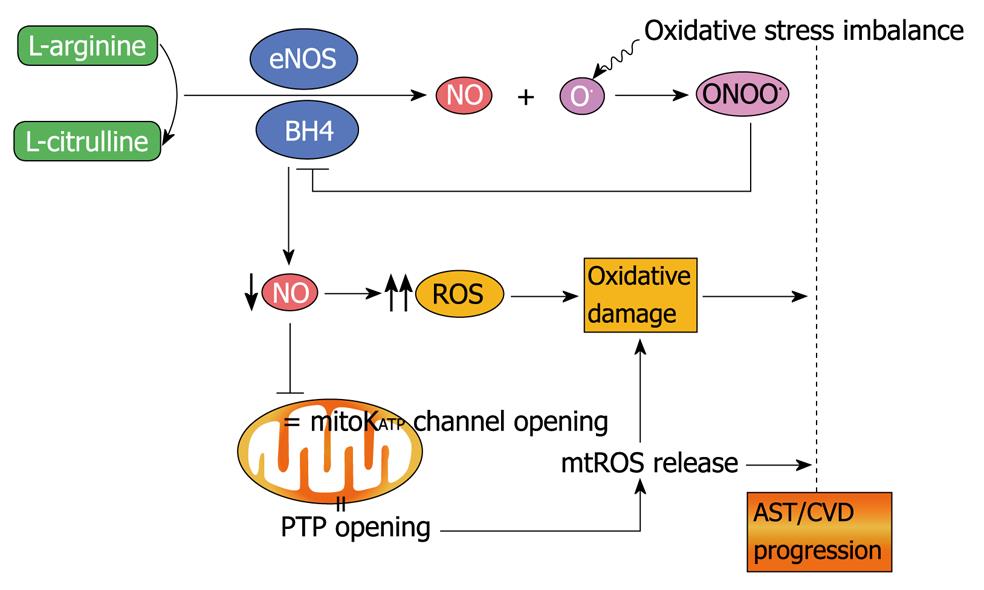Copyright
©2010 Baishideng Publishing Group Co.
World J Cardiol. Jun 26, 2010; 2(6): 150-159
Published online Jun 26, 2010. doi: 10.4330/wjc.v2.i6.150
Published online Jun 26, 2010. doi: 10.4330/wjc.v2.i6.150
Figure 2 Proposed facilitation of AST progression via the opening of mitoKATP channels.
Decreased NO production by eNOS and increased expression of ROS induce AST. Excessive ROS with affinity for NO bind with it to produce the peroxynitrite anion (ONOO.) which inhibits tetrahydrobiopterin (BH4), an essential cofactor of eNOS, leading to further reduction of NO. Significantly reduced NO not only increases ROS production, but also induces the opening of mitoKATP channels, followed by activation of the permeability transition pore (PTP), leading to mtROS release and AST development. mtROS: Mitochondrial ROS; NO: Nitric oxide; mitoKATP: Mitochondrial ATP-sensitive K+; eNOS: Endothelial nitric oxide synthase.
- Citation: Chang JC, Kou SJ, Lin WT, Liu CS. Regulatory role of mitochondria in oxidative stress and atherosclerosis. World J Cardiol 2010; 2(6): 150-159
- URL: https://www.wjgnet.com/1949-8462/full/v2/i6/150.htm
- DOI: https://dx.doi.org/10.4330/wjc.v2.i6.150









